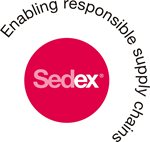
WHAT IS THAT
Sedex is a non-profit organization committed to increasing the diffusion of ethical principles along global supply chains and constitutes the largest platform in Europe that collects and processes data on the ethical behavior of supply chains.
The Sedex methodology has not created a new certification standard, but has proposed a procedure (SMETA) to conduct audits at its suppliers which collects best practices regarding the conduct of audits in an ethical and social manner.
KEY POINTS
SMETA stands for “Sedex Members Ethical Trade Audit and was developed by the Sedex Associate Auditor Group (AAG), through multi-stakeholder consultation, to provide a best practice framework for performing audits and reporting on social matters.Main features of SMETA:
- It is a procedure designed to reduce the duplication of audits or other monitoring tools for verifying compliance with ethical requirements
- It describes a methodology for conducting audits through a collection of best practices in the field of ethics control
- The beneficiaries are all the stakeholders involved in the process: retailers, producers and suppliers in general
- It is proposed as a tool for improving the transparency of audit methods
The SMETA audit can be conducted on the basis of:
- 2 pillars : working conditions, health and safety
- 4 pillars : working conditions, health and safety, working environment, business practices

SMETA includes:
- A Common Guide to Conducting Audits (BPG)
- A report with a common format for audits
- A format for a common corrective action plan
THE PHASES OF SMETA
1) Compilation of the SAQ (Self Assessment Questionnaire) by the supplier company with the 2 or 4 pillars.
2) The SAQ is made available to the customer.
3) The customer carries out a risk assessment on the supplier based on the information contained in the SAQ (e.g.: product / service category, type of purchase, relationships between workers, level and nature of subcontracting, level of commitment by the supplier).
4) Based on the risk assessment the client decides on the audit programme.
5) The SAQ is made available to the auditor for audit planning which can be of the type:
- announced
- unannounced
- half announced
- a combination of these types of audits, based on the evaluation made by the client
6) The supplier contacts the auditor for the audit request.
Many types of audits of a 'social' nature can be uploaded to the Sedex System (System used to manage SMETA audits) and it is up to the individual Sedex retailer to decide whether or not to accept such audits.
ADVANTAGES
- improves social performance along the supply chain
- allows careful management of its suppliers
- reduces ethical risk
- reduces duplication of audits
- provides a global procedure in full transparency